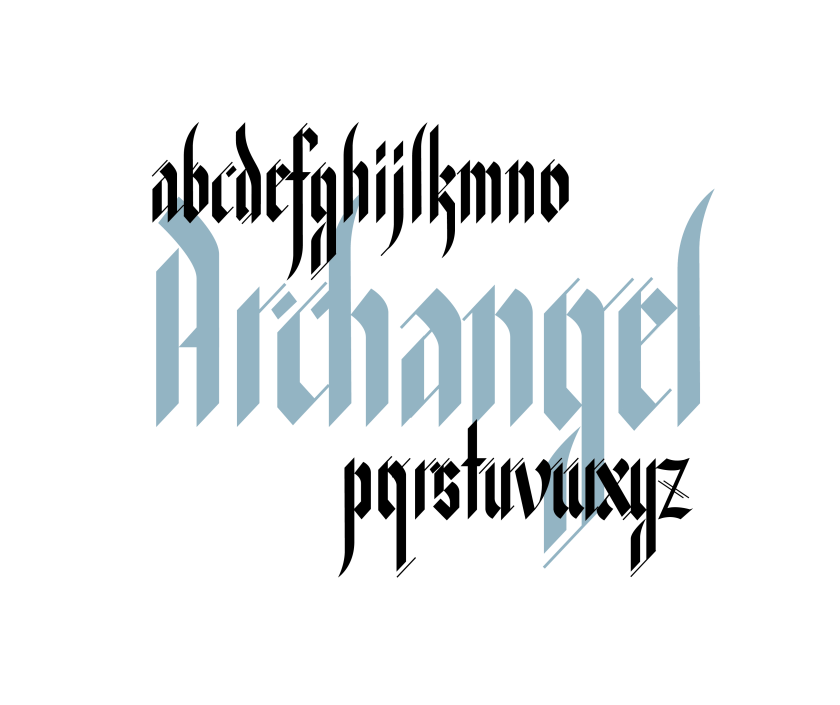
I was listening to what has to be one of the best records of the past few decades, Untrue, by Burial. For some reason I got inspired to make something to express how the music felt to me. The track features rolling UK garage rhythm, sampled choir and strings, and a haunting bassline.
I chose to create a blackletter treatment of one of the track titles, Archangel. I started with the basic characteristics of the style, shallow angled flat-nibbed pen and perpendicular rather than curved letterforms. To complement the rolling, syncopated rhythms and staccato drumbeats, I broke up many of the letters, forming diagonal dashes, and made them tall and narrow with prominent ascenders and descenders.

 For me, and I suspect for many others, the dark, timeless feeling of Burial’s music perfectly matches the associations people have with blackletter type. Blackletter fonts are often used to make something look old and rustic. But they are also seen as dark, sombre and even aggressive. It is favoured not only by beer brands and antique shops, but also by heavy metal musicians and rappers.
For me, and I suspect for many others, the dark, timeless feeling of Burial’s music perfectly matches the associations people have with blackletter type. Blackletter fonts are often used to make something look old and rustic. But they are also seen as dark, sombre and even aggressive. It is favoured not only by beer brands and antique shops, but also by heavy metal musicians and rappers.
Their physical characteristics support this image. They appear black and heavy, with fractured and angular forms. These design features started out in the 12th century simply as practical innovations. The straight and perpendicular lines made it easier to write quickly and neatly on rough parchment, to serve the growing demand for books among an increasingly learned Western European readership.
It began to acquire its counter-cultural associations during the Renaissance, when the printing press allowed for a variety of styles to be produced just as quickly, and revival of Classical styles prompted the dismissal of Medieval styles as ‘barbaric’ or ‘Gothic’. Save for the persistence of blackletter in Germany as a proud marker of difference against the rest of Europe, the style fell out of mainstream use.
Blackletter was invented in response to a specific problem at a specific time. As a universal typeface for use in general typesetting, its days would always be numbered. But its physical features and its historical patina secures its place as a modern display typeface style. I think we’re seeing something of a revival of Blackletter in mainstream culture, as people become disillusioned with the idea of progress, and want to reconnect with a (real and imagined) cultural past. Other calligraphic styles have faded into mediocrity, being revived only to lend prestige, or to parody the olden days. However blackletter carries enough power not only to reconnect us to the past but also to make a serious, and relevant, statement about the present.




